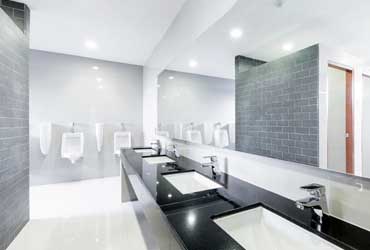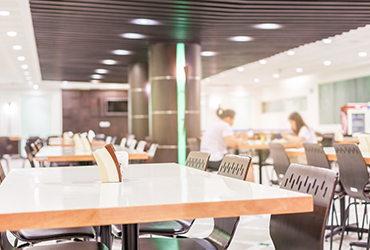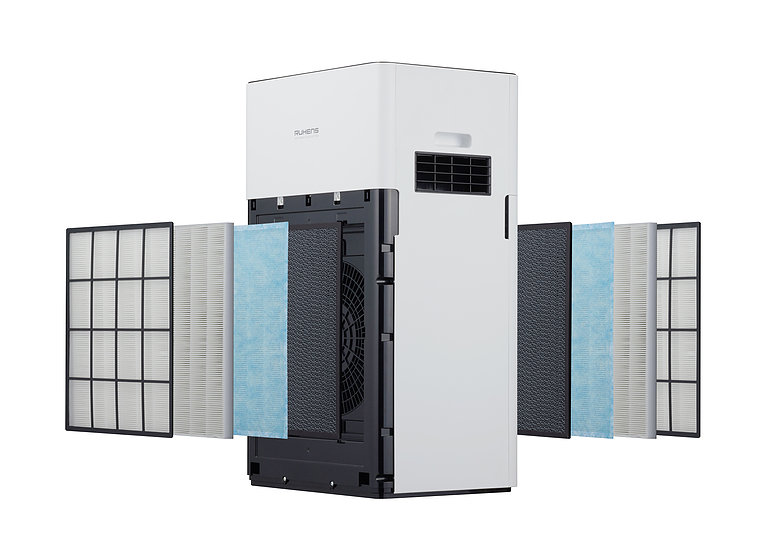Air Purifiers for Schools & Classrooms
Air Care Solutions is setting the standard with air purification designed for schools, colleges and universities to protect students and staff from harmful viruses and bacteria. We offer a range of commercial-grade air purifiers that meet the highest safety standards.
A recent clinical trial demonstrated that HEPA air filtration units could reduce the amount of air pollution exposure for all students, children and staff in classrooms by up to 95%. Studies have also shown that the safer children feel in the classroom, the more motivated they are to engage in the learning process leading to increased academic success.
With Air Care Solutions, you can elevate the standard of learning with air purification designed for educational institutions.
What you should know about air purifiers for schools and universities
HEPA air purifiers are the most effective way to reduce indoor air pollutants. Air Care Solutions’ HEPA H13 filters are designed to capture 99.99% of particles 0.1 microns and larger, including dust, pollen and mould spores.
Our air purifiers use a combination of HEPA filtration and activated carbon technology to remove odours, gases and chemicals from the air. We offer a range of models that can be used in classrooms or other areas where students spend time exercising, studying or working on projects.
For more technical details, head over to our How it Works section.

Why air purification in educational institutions matters
Cleanliness is important in the classroom, but it’s not enough to just keep the room clean. Students need to be able to breathe clean air to learn and stay healthy. Recent studies have shown that students exposed to indoor air pollution are more likely to suffer from headaches and fatigue.
The air inside a classroom can be up to five times more polluted than outside. This is due to indoor air pollutants such as allergens, dust mites, and even traces of cigarette smoke. Indoor air pollution has been linked to several health problems, including asthma, allergies and respiratory infections.
What are the key areas to place air purifiers in schools, colleges and universities?
Air purifiers can be placed in the following areas:

Classrooms
You can place air purifiers in classrooms where children spend much of their time. This is important because children are more susceptible to air pollution than adults. The pollutants they breathe in can affect their lungs and immune systems, and other parts of their bodies, such as the brain and heart. In addition, children may be more likely to develop asthma attacks or other respiratory problems when exposed to high levels of pollutants.

Changing Rooms
Air purification eliminates airborne viruses and other pathogens. Air Care Solutions HEPA air purifiers remove up to 99.9% of contaminants in the air leaving high-traffic environments like changing rooms free from moisture build-up or bacteria.

Canteens
Air purifiers can also be placed in canteens where students eat lunch and snacks during school hours and after school hours on weekends or holidays when schools are closed for long periods such as during the summer holidays or half-term.
Types of air purifiers for schools and universities
Several types of air purifiers can be used in educational institutions. These include:
- HEPA Air Purifiers – HEPA air purifiers are the most common air purifier used in schools and universities. At Air Care Solutions, our air purifiers are CADR-certified, with a 780 m3/hr rating, ensuring the highest performance standards.
- UV Air Purifiers – All our air purifiers use two UVC lights. This soundless, ultraviolet light kills any airborne bacteria and viruses and sterilises the air. They are effective against various microorganisms, including E-coli, Salmonella, Staphylococcus Aureus and Influenza A Virus.
- Ionizer Air Purifiers – Cluster ion technology within our HEPA H13 filter helps eliminate micro-pollutants that can cause stress and depression by capturing negative ions and diffusing them.
If you are after an air purifier for large spaces like canteens or assembly halls up to 140 m2, our RUHENS WHA 400 UVC with its 8-stage filtration system is a great solution. It even contains a ventilation alarm that will alert students and teachers of high CO2 concentration levels. The RUHENS WHA 320 UVC is slightly smaller and can filter the air inside spaces up to 70 m2.
Portable air purifiers like the RUHENS WHA 200 or RUHENS WHA 500 may offer a more convenient, cost-effective solution for classrooms and changing rooms.

Keeping students and teachers safe.
Ruhens air purifiers removes 99.9% of airborne viruses, bacteria and other pollutants
Common pollutants contaminating the air in schools
The two most common pollutants found in schools, universities and other educational institutions are pollen, mould spores and dust.
- The pollen count in schools can be especially high during spring and summer when the pollen count in outdoor air is highest.
- Mould spores are present all year round and can be found on school furniture, carpets, walls and ceilings.
- Dust is a mixture of tiny particles of different sizes and origins. It is usually made up of skin cells, hair, textile fibres, soil particles and fragments of dead insects or other animals. Dust particles are so small that they can remain suspended in the air for long periods.
- While not allowed inside, tobacco smoke is another commonly found pollutant in many schools. Tobacco smoke contains many harmful substances, including tar, carbon monoxide and nicotine. These substances can cause cancer and other diseases.
Children and adolescents are also more susceptible to air pollution because their lungs and immune systems are still developing. In addition, children breathe faster than adults and inhale more pollutants per unit of body weight than adults do. Furthermore, children tend to spend more time indoors than adults, which increases their exposure to indoor air pollution. The health effects of air pollution on children depend on the type of pollutants present in the air they breathe and the number of pollutants they inhale over time.
Some pollutants affect the respiratory system, such as coughing or asthma attacks, while other pollutants may have long-term effects such as lung cancer or heart disease later in life. In addition, some pollutants may affect only certain parts of the body, such as the eyes or skin, whereas others may affect all parts of the body, including internal organs such as the brain or heart.

Frequently Asked Questions
-
Why rent or purchase your school’s air purifier from Air Care Solutions?
Renting or purchasing air purifiers from Air Care Solutions is a great way to keep your institution clean and safe for students and staff. We offer high-quality products at a range of prices so that you can find the perfect product for your needs. Air Care Solutions also provide a range of services, including installation. You can purchase online, get more information by filling out our contact form or speak to our team directly on 01244 987443.
-
Is one air purifier per classroom enough?
In general, one air purifier per classroom should be sufficient to improve air quality and help reduce allergies and asthma symptoms.
-
How do we know if the air in the classroom is clean?
Our range of air purifiers have a real time display of air quality by colour so you can be confident that the air you are breathing is safe from contaminants.
-
How often will classroom filters need replacing?
How often the filter needs replacing will depend on air quality and whether the purifier is running 24 hours per day or just during school hours for example. Our rental plans offer fully inclusive filter replacements.
